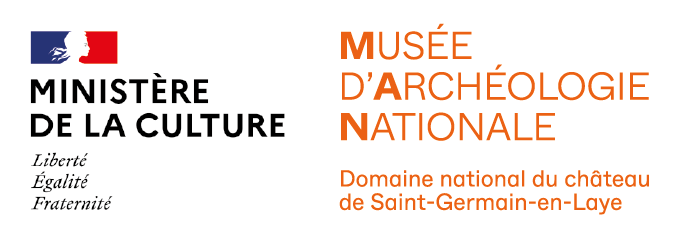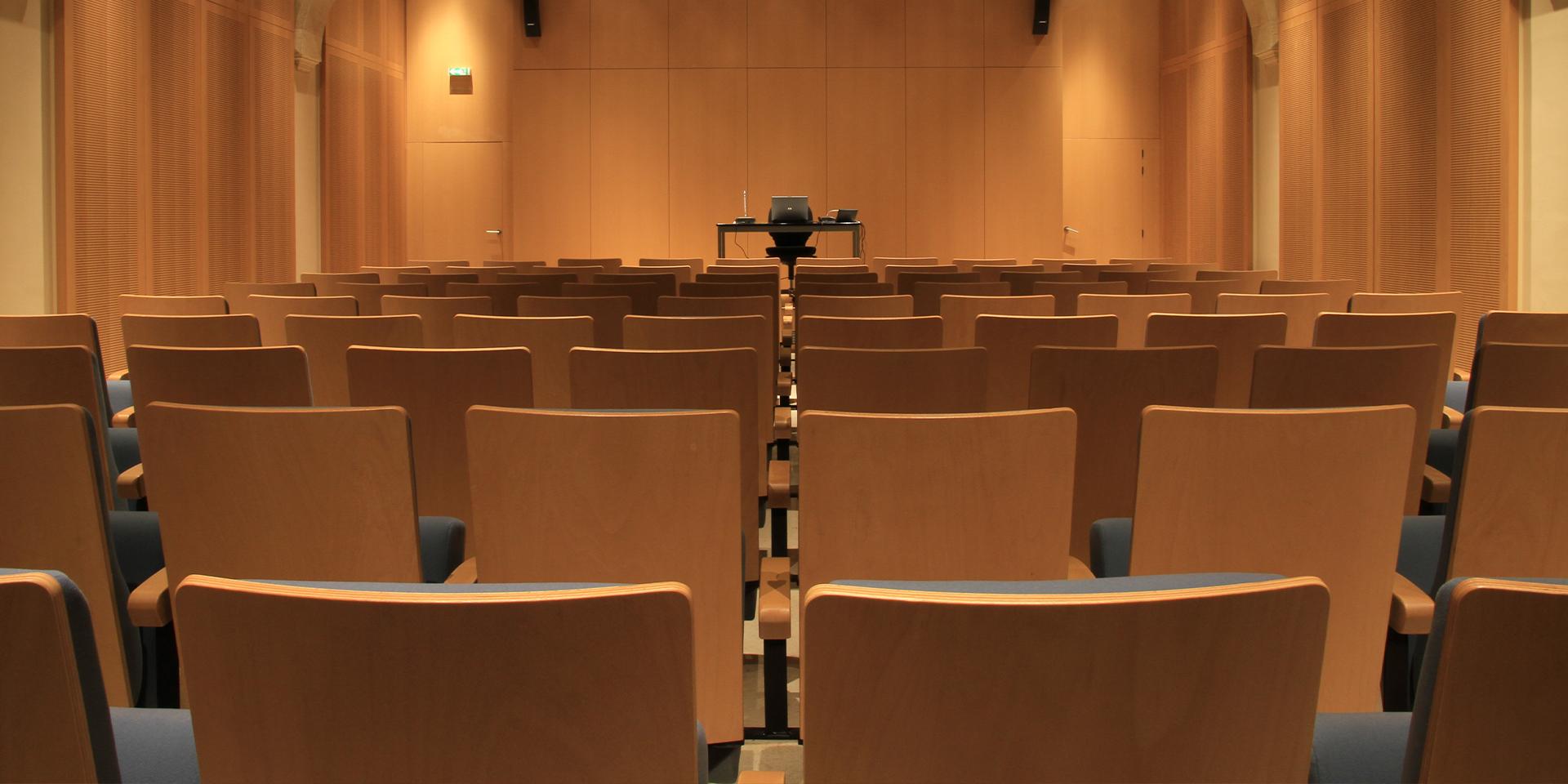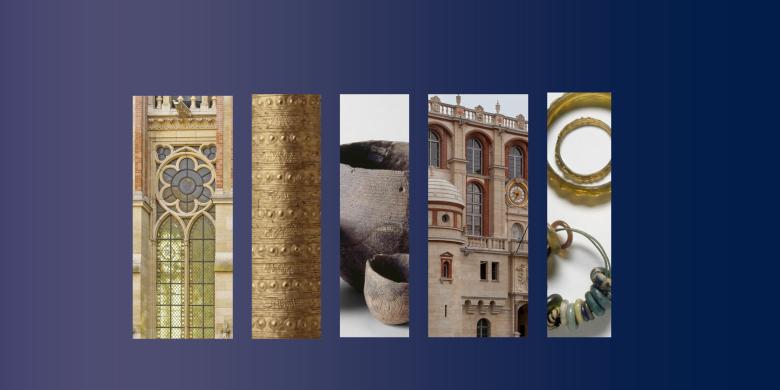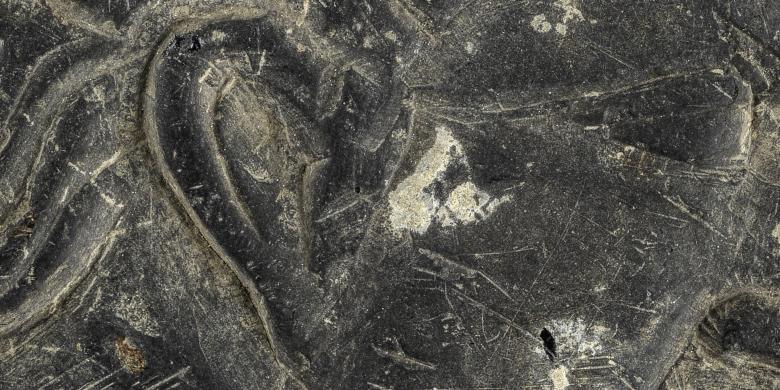International workshop
THE ORIGIN OF EARLY MIDDLE AGES GARNETS
Trade between the Indian subcontinent and Europe from the 5th to the 7th c. AD
June 22 - 23, 2017
Musée d’Archéologie Nationale, Château-Place Charles de Gaulle, 78100 Saint Germain en Laye
Centre de recherche et de restauration de musées de France C2RMF, Palais du Louvre, 75001 Paris
Highlight research projects on the provenance of garnets, the emblematic gem of the cloisonné style which, in the 5th and 6th centuries, characterized almost all the Western world, from the Black sea to Anglo-Saxon territories and from Scandinavia to North Africa. The majority of these investigations were carried out using the transnational access to the AGLAE accelerator of the C2RMF open for more than a decade to the scientists working in Heritage in Europe, following the ‘Merovingian Garnet’ programme initiated in 1999 on the MAN collections. These programmes focused on garnets from famous archaeological collections from France (notably MAN and the Cabinet des Médailles of the Bibliothèque nationale de France) and from elsewhere in Europe (Germany, Belgium, the Netherlands, Romania, United Kingdom...) often with unreleased results.
Day 1 at the MAN in Saint-Germain-en-Laye
Present the results of the garnet analyses carried out in the framework of the European programs Eu-ARTECH, CHARISMA and IPERION and other programs elsewhere in Europe (International Framework / Weltweites Zellwerk) or in the rest of the world. While garnet analyses has shown that
a restricted number of sources, mainly from India and Ceylon (Sri Lanka), were used everywhere in Europe during the 5th and 6th centuries, those exploited later are of European origin, a fact indicating a major change in the Indo-European trade around 600. Participants will be invited to the
inauguration of the exhibition ‘Austrasia, the forgotten Merovingian Realm’ in the evening.
Day 2 at the C2RMF in Paris
The place of the garnet trade in the long-distance commerce between early Middle Ages India and Europe will be discussed, in particular with historians and archaeologists of ancient India. The terrestrial and maritime routes will be considered (Silk Road, Berenike, etc.). The investigation of
garnet raw and worked beads excavated from workshops in Mediterranean rim and from coastal emporia in India will be reported. Finally, the extension of the program to garnets from late Antiquity, notably present on necklaces, rings, intaglio, will allow establish the link with preceding
periods. A round table discussion will he organized to provide a synthesis, draw perspectives, and plan the publication.
Western World. On the other hand, written sources that could confirm the persistence of this trade during the early Middle Ages are scarce, at least in the West, and except the Christian Topography by Cosmas Indicopleustes in the 6th c. that testifying that precious textiles, spices and gems were still reaching the West, whereas written Indian and Persian sources, and later Arab ones attest it better. However, apart from a few textile remains conserved in church’s treasures or exceptionally recovered from excavations like those found in Merovingian graves of the Saint-Denis basilica near Paris, material evidences of this trade remain very rare.
This is no longer the case today, thanks to recent excavations in Western Europe and pioneering laboratory work. It is now possible to establish that at the beginning of the Merovingian period Indian and Ceylon garnets were massively employed in the manufacture of cloisonné jewels, which testifying to survival, till the end of the sixth century, of continuous exchanges between the Indian subcontinent and the Mediterranean world.
Local organisation
Thomas Calligaro and Patrick Perin, co-chairs (C2RMF)
Catherine Louboutin, deputy director, in charge of scientific policy (MAN)
Organizing Institutions
Ministry of Culture and Communication - FRANCE
Centre de recherche et des Restauration des Musées de France (I. Pallot-Frossard, director)
Musée d’archéologie Nationale - Domaine national de Saint-Germain-en-Laye (H. Multon, director) with the support of the Département des Affaires Européennes et Internationales (DAEI) of the Direction Générale des Patrimoines and of the Département de la Recherche, de l’Enseignement
Supérieur et de la Technologie (DREST).
Contact : Thomas Calligaro thomas.calligaro@culture.gouv.fr



